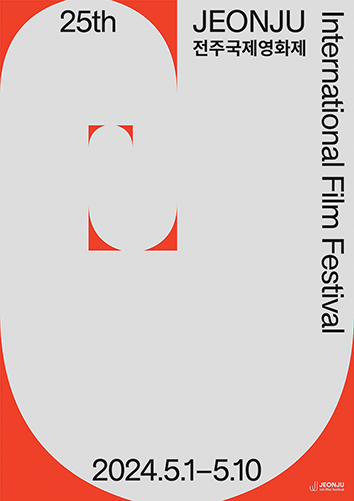The Godfather of Korean Rock: Shin Jung-hyeon
Written by Ryan Berkebile
하늘은 파랗게 구름은 하얗게
Skies are blue and clouds are white
실바람도 불어와 부풀은 내 마음
A light breeze fills up my mind
나뭇잎 푸르게 강물도 푸르게
Leaves are green and rivers are blue
아름다운 이곳에 내가 있고 네가 있네
It is beautiful here, here I am
손잡고 가보자 달려보자 저 광야로
Let’s hold hands and run to the great field
우리들 모여서 말해보자 새 희망을
Let’s come together and talk about new hope
하늘은 파랗게 구름은 하얗게
Skies are blue and clouds are white
실바람도 불어와 부풀은 내 마음
A light breeze fills up my mind
우리는 이 땅위에 우리는 태어나고
Here we are being born
아름다운 이곳에 자랑스런 이곳에
On this beautiful and proud land
살리라
We will live
[Excerpt from Shin Jung-hyeon’s song “Beautiful Rivers and Mountains” (아름다운 강산).]
From my experience, if you walk down the street in any urban Korean setting, the music stylings you will discern are mainly one of two choices: K-pop or trot (트로트). Modern businesses, like smartphone retailers or beauty product peddlers, will blare the latest single from the latest boy or girl group to attract younger consumers. Businesses that cater to an older subset will blast trot to welcome in their clientele. In all the years I have lived in Korea, I have noticed that rock music is a less visible genre in the Korean mainstream. It feels like a void. Then one day, I came across the music of Shin Jung-hyeon, and I saw that Korea did have rock music. Shin is the link to all rock music in Korea to this day, so it is no wonder he is known as “The Godfather of Korean Rock” (한국 록의 대부).

band, the Yup Juns (신중현과 엽전들).
Knowing where to look, you will find an active presence of rock ’n’ roll scenes here, especially a healthy scene of independent artists and venues that support new ideas. However, the genre as a whole seems to be drowned out by the screaming K-pop groupies and booming electronic trot beats. On one hand, if you dig deeper into Korea’s past, you will notice Korea had a phenomenal rock scene in the midst of a rising youth culture in the 1960s and 1970s. Shin is widely considered the sound of it. He had his hand in most major recordings during the time, whether it was writing, playing, or producing albums for numerous singers of the era. Further research will also reveal dictator Park Chung-hee’s hand in stomping out youth culture/countercultural activities and fashions considered “unwholesome” at the time, like short skirts, men with long hair, and of course, rock ’n’ roll.

According to Park, traditional Korean values, like filial piety, were being eroded away due to the new ideas being introduced by Westerners living in Korea at the time.[1] Young people wanted more freedoms in their choice of marriage partners and in what they wanted to do as a career – i.e., ideas that broke with Confucian values. Many Korean youth thought of the music of Shin Jung-hyeon as the soundtrack to their generation. The Park regime saw him and rock music as a threat and did all it could to eliminate his influence on the youth population. Park’s agenda single-handedly stunted the growth of rock music in Korea, and Shin faded into obscurity as a result.
While Korea is today a worldwide exporter of Korean popular culture, this has not always been the case. In the era of Japanese colonization, followed by the U.S. Army presence after the Korean War, Western-style entertainment started to become popular on the peninsula. A young Shin Jung-hyeon grew up in postwar Korea listening to Armed Forces Korea Network (AFKN) on a radio he had constructed with his own hands.[2] He chanced upon the sounds of The Beatles, Charlie Parker, and Jimi Hendrix and was hooked. In fact, he loved everything that was transmitted from the station. Besides rock ’n’ roll, soul, folk, country, and funk music would seep their way into his future recordings.
The tunes played on AFKN inspired him to trade in his violin for a guitar, and quit high school and his work at a pharmaceutical factory to become a performer full-time. The passion of the music that captured Shin emboldened him to get on stage and perform for U.S. servicemen in clubs at Yongsan Garrison. It was at the various entertainment venues on base where Shin honed his craft. As he got comfortable being on stage, his ability to play and sing soulfully created buzz for soldiers on the base. Beatlemania soon came to Korea, inspiring Shin to join Korea’s first rock band, The ADD4, with whom he scored a minor hit on the radio. It would be a few years later, after hearing psychedelic rock, when Shin would find his true voice as a musician.

The troubles began for Shin after he released the aforementioned song to the public in 1972. It coincided with the beginning of the Fourth Republic of Korea, governed under the Yushin Constitution (유신 헌법), which granted the president an expansive range of governing powers. Shin was at the peak of his creative powers as a singer, songwriter, and producer during the psychedelic 60s and 70s. Along with creating albums in his own rock combos, Shin wrote and produced for other popular singers of the time, like Kim Jeong-mi, The Pearl Sisters, The Bunny Girls, and Kim Chu-ja, creating works that are still revered and covered by musicians today. When “Beautiful Rivers and Mountains” was released, it was in direct defiance of Park Chung-hee’s order to Shin to write a song praising the dictator. Thus began a long string of run-ins with authorities. Shin was harassed by police, who grabbed him and cut off his long hair in public to make a statement.[3] In 1975, he was arrested for possession of marijuana and thrown into a psychiatric hospital. Shin also served time in prison, where he was tortured. It was around the time of his arrest when he was blacklisted from performing live concerts and his records were prohibited from radio rotation until Park’s assassination in 1979.
Despite being free to perform again, Shin soon found another obstacle to overcome. In the ensuing years of his exile, people’s tastes had changed since he was last in the spotlight. The youth now gravitated to disco or music that was more happy and upbeat. Trot (a style of music Park Chung-hee enjoyed) was also back in the public eye. During the 1980s, Shin would run a couple of music clubs, including one called Woodstock, which he would own for twenty years.
Around the year 1997, critics and musicians started to reevaluate his music, leading to a resurgence in his popularity. In the late 2000s, Shin began to get international recognition for his musical genius. Record collectors started posting digital rips of his extremely rare, out-of-press vinyl on blogs, drawing attention to The Godfather of Korean Rock from points all over the globe, thus kicking off another wave of adoration from a new international fanbase. Coinciding around this time, Shin played the Hollywood Bowl, was honored with a signature tribute series Fender guitar, and had a career-spanning retrospective album released through the U.S. independent record label Light in the Attic. It has never been a better or easier time to discover the Shin Jung-hyeon sound. His music has transcended dictatorships and neglect, and sounds as fresh as the day it came out.
References
The Author
Ryan Berkebile recently packed his bags and left Gwangju for big-city life in Gyeonggi-do. He has left a piece of his heart in the City of Light and solemnly vows to make regular visits back to the Gwangju International Center and The First Alleyway. He documents his weekend adventures at longdistancerunner.org and on Instagram @zen_compass.








